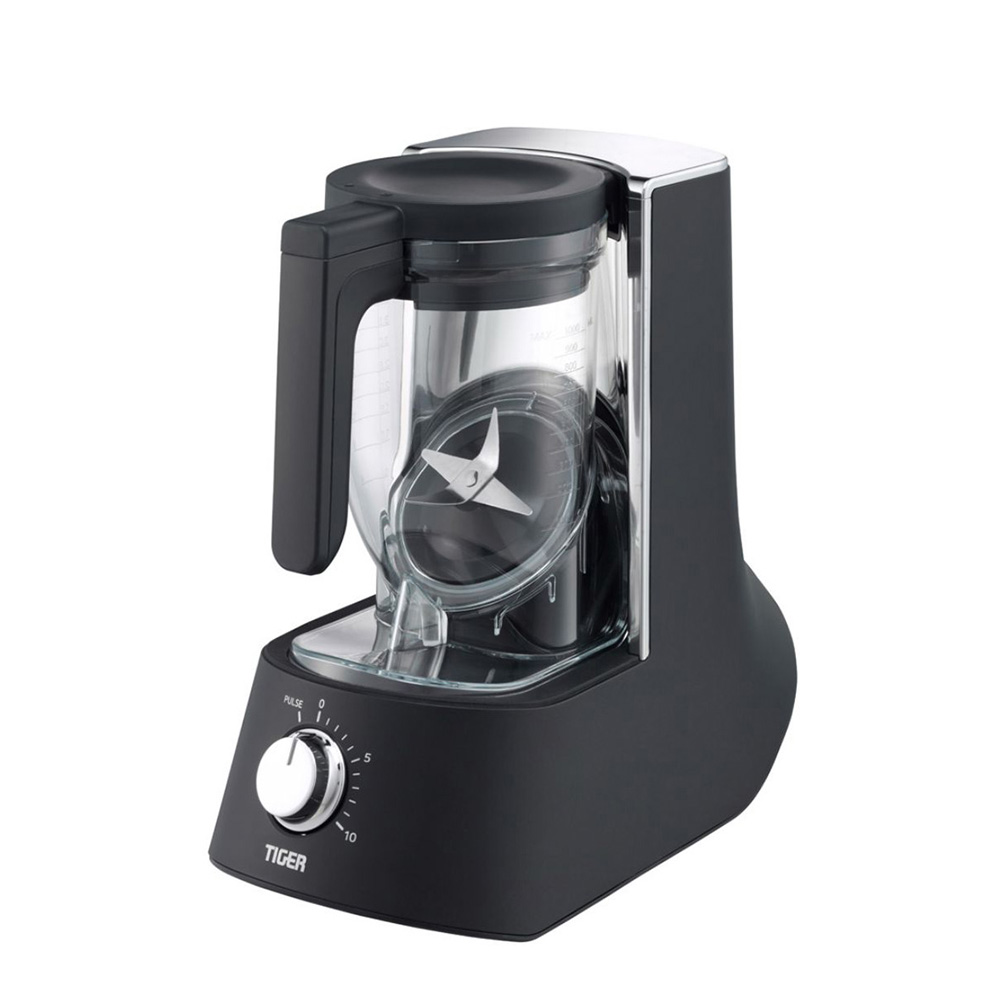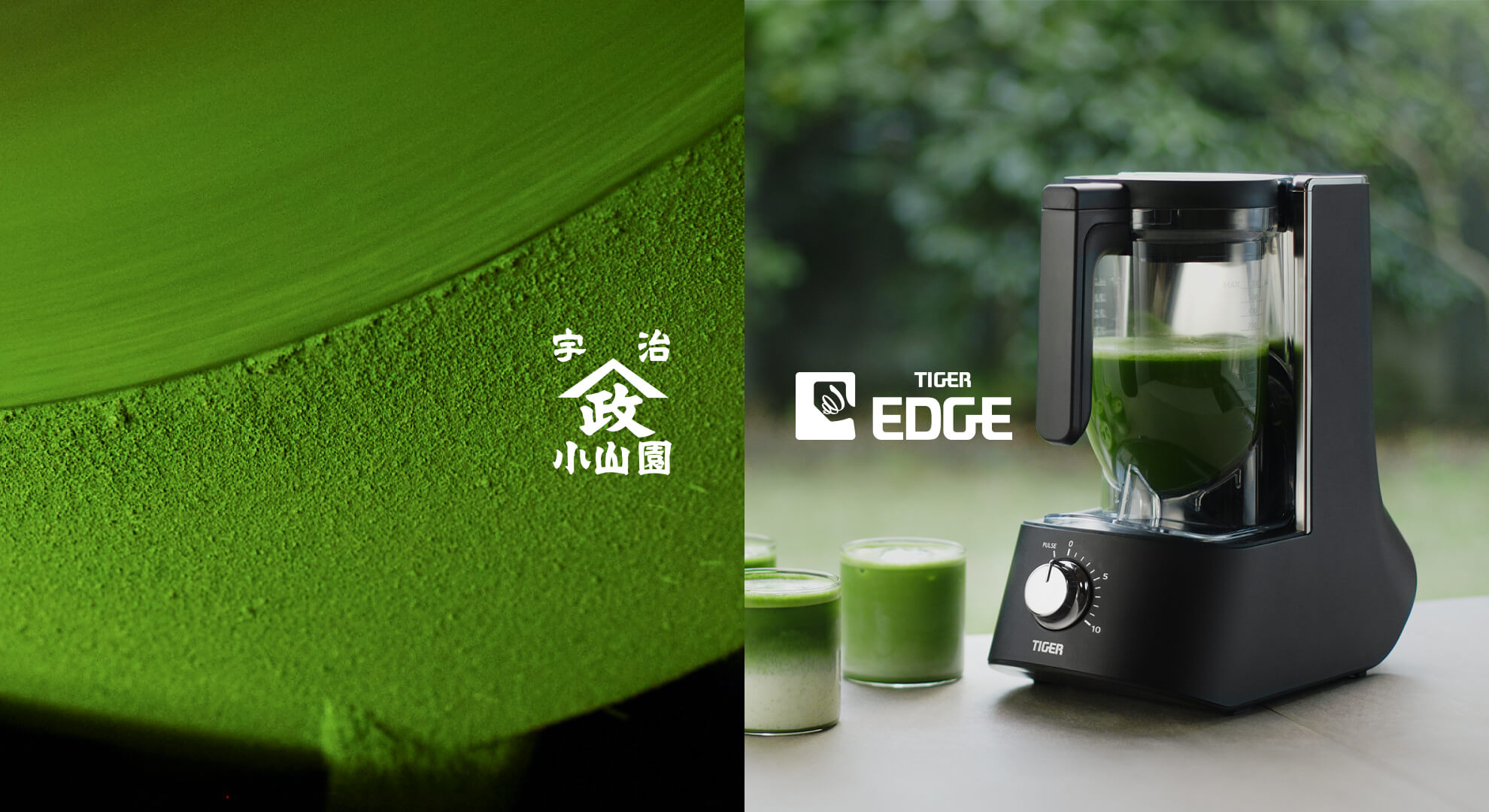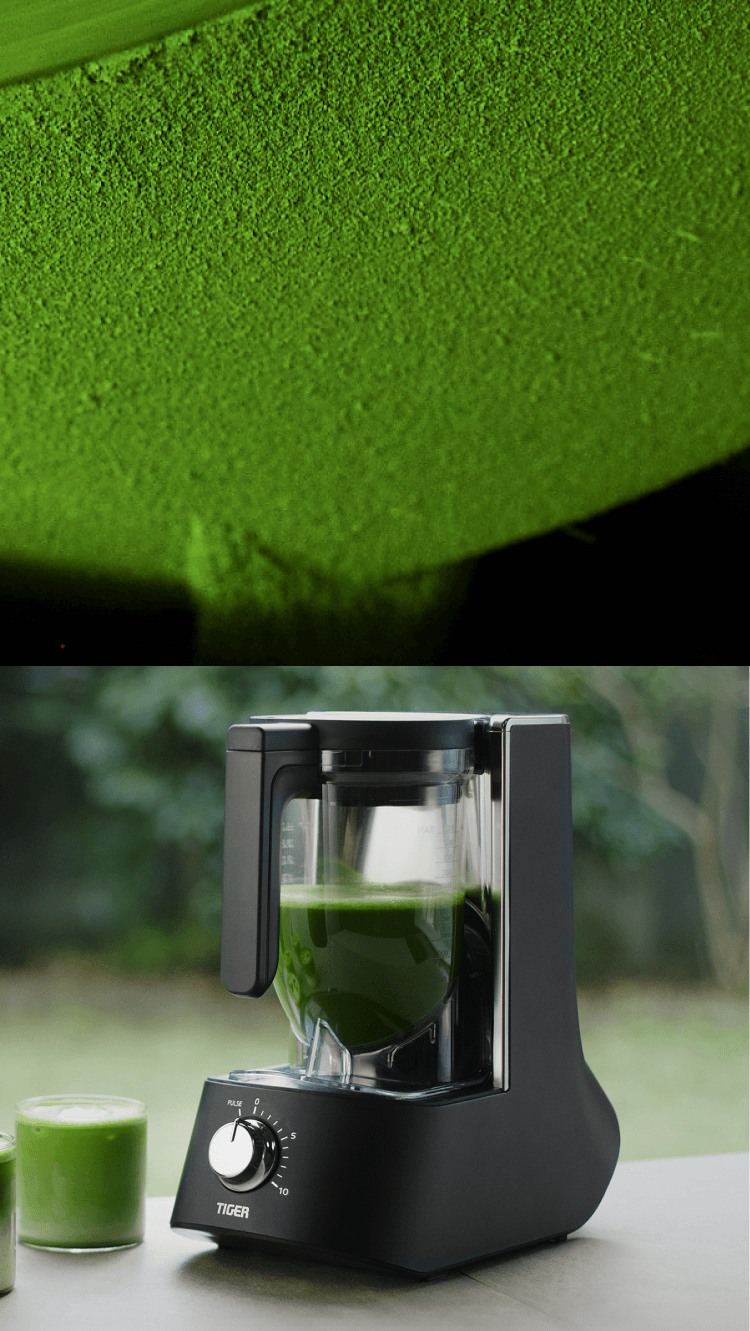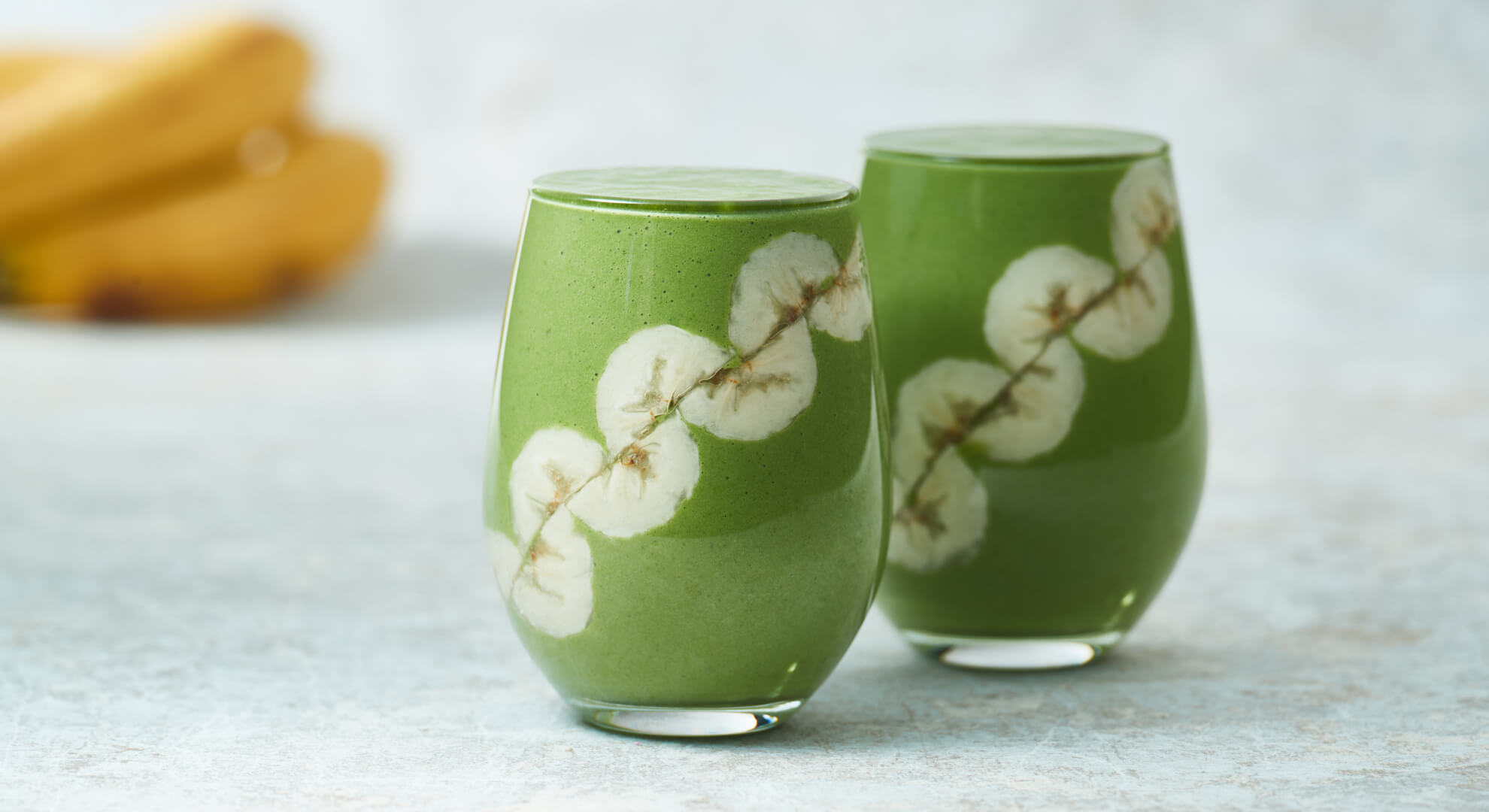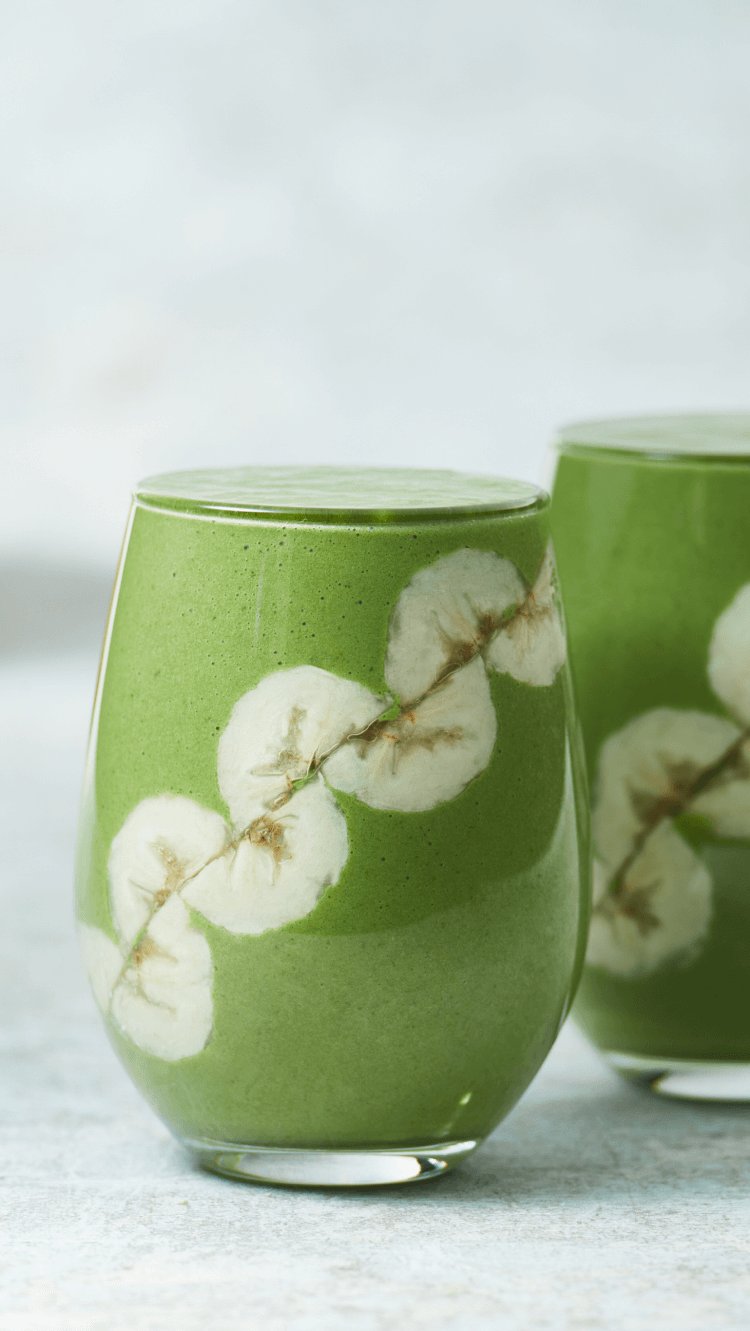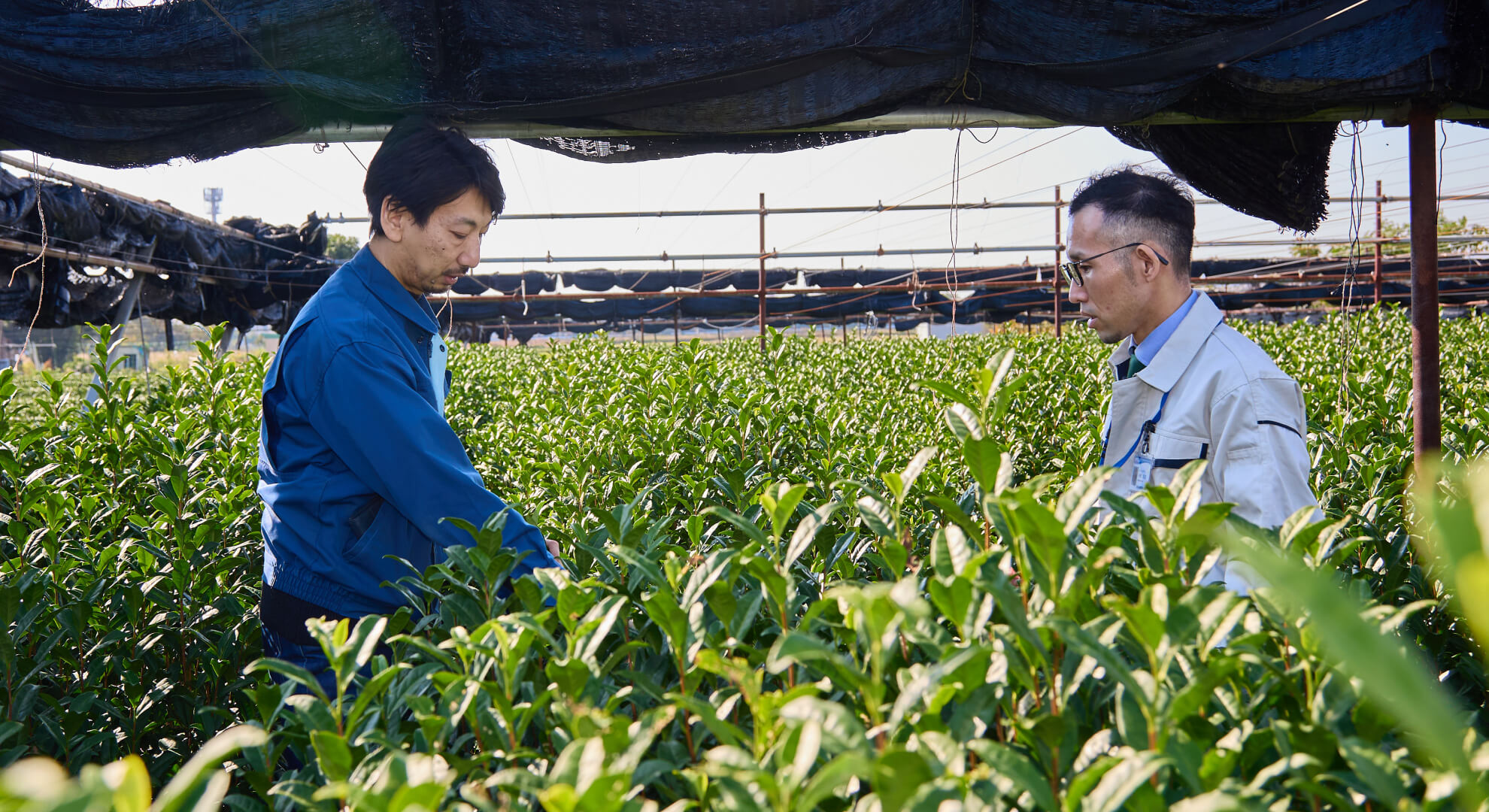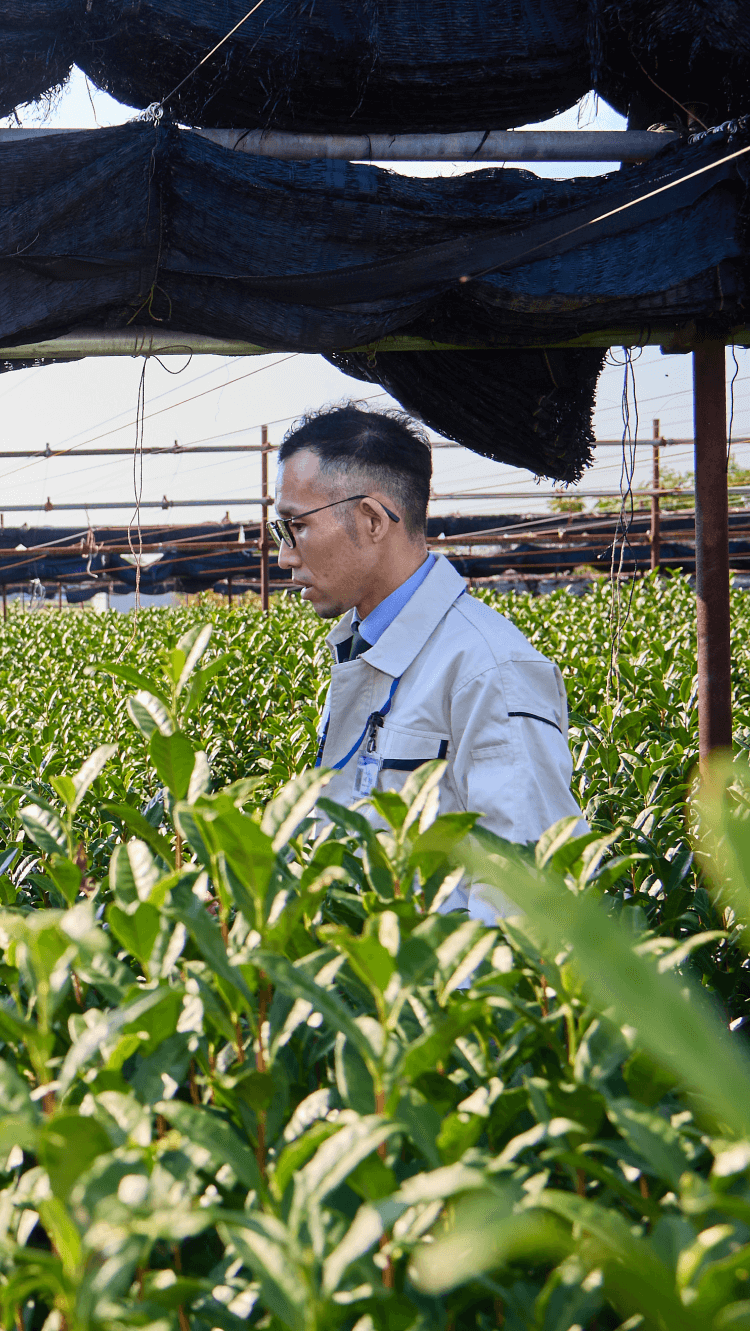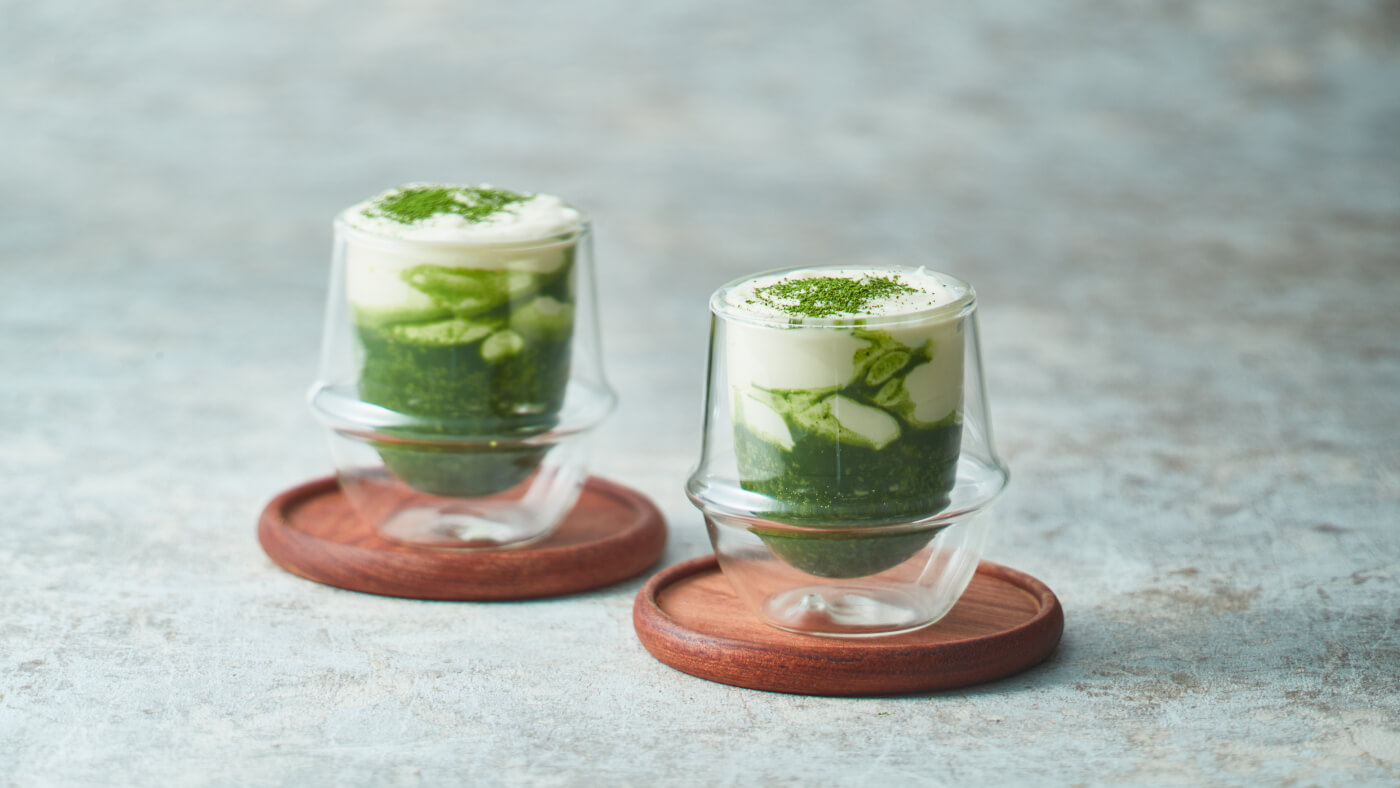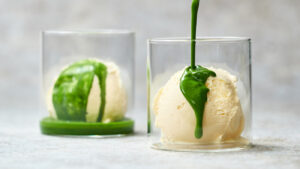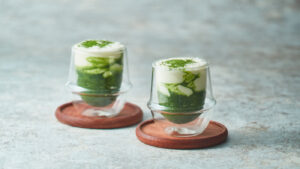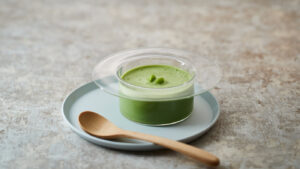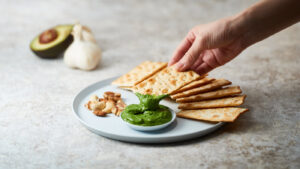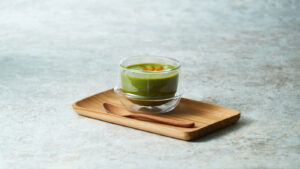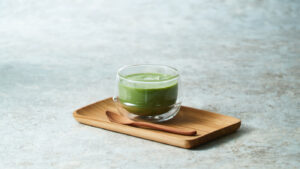

Special collaboration with Yamamasa Koyamaen
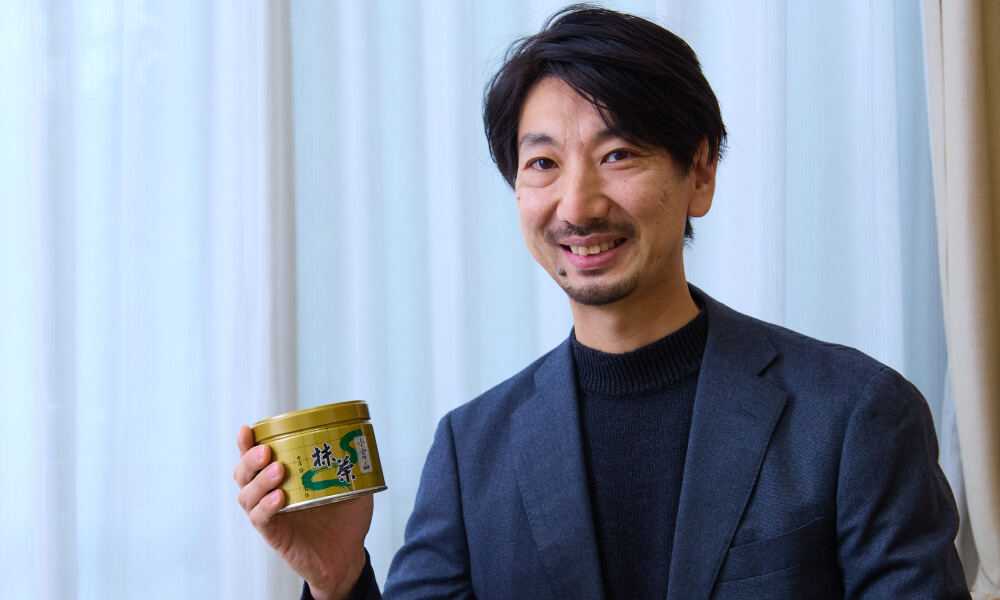
Yamamasa Koyamaen
Director Masayoshi Koyama
Born in Uji City, Kyoto.
Marketing manager responsible for brand design, product planning, and promotion.
Author of the matcha recipe book and the company’s own matcha café, “ATELIER MATCHA” in Tokyo and Kamakura.
Also experienced as a licensed architect and marketer, and an enthusiast of traditional culture, art, and design.
Beliefs on Matcha Making
A brand that has been making the world’s renowned matcha for hundreds of years is located in Uji, Kyoto, Japan.
We interviewed Mr. Koyama, CEO of Yamamasa Koyamaen, for this collaboration with TIGER.

Mr. Seigo Koyama, CEO of Yamamasa Koyamaen
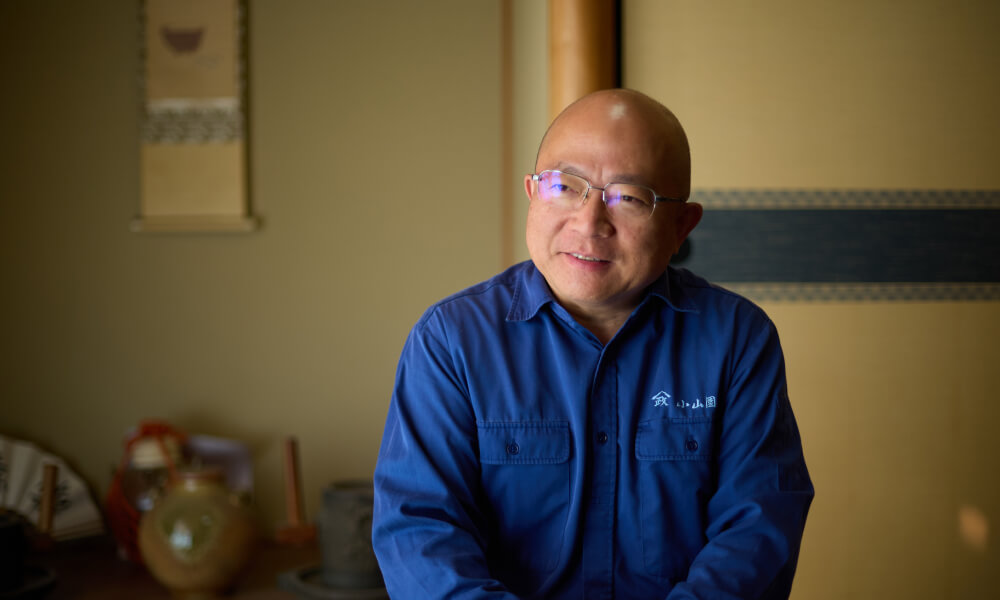
Striving to produce based on the philosophy “Taste First”.
Tea is not essential for daily life. If you just want to hydrate, there are other drinks available, such as water or juice. However, we believe that green tea, including matcha, has the power to enrich our lives, and that is why we believe tea must be delicious.
Matcha and traditional Japanese green tea originate from the same plant but are grown and processed differently. Matcha is more labor-intensive because the raw material for matcha, known as Tencha, is grown under cover, which shades the tea plantation from sunlight before harvesting. The highest quality matcha comes from sprouts that are handpicked by skilled workers. The most tender and flavorful leaves are ground on a millstone to produce matcha.
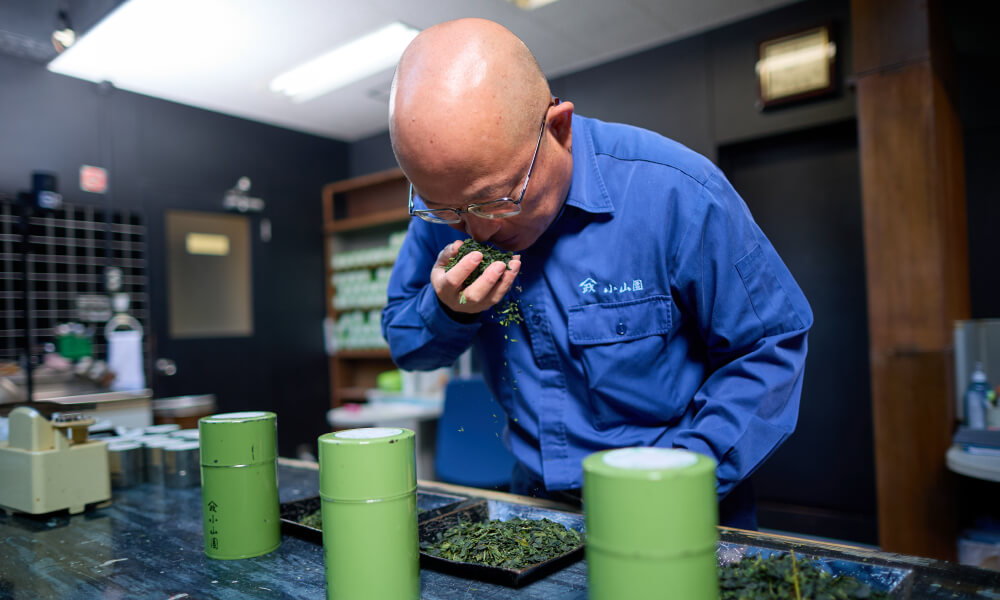

As you can see, matcha is a very simple food product that is picked, and the raw leaves are sorted and ground. Therefore, the quality of the raw tea leaves is directly reflected in the quality of the matcha. To produce delicious matcha, one must be familiar not only with the processing and manufacturing methods, but also with the cultivation and characteristics of the tea leaves used to make it. Yamamasa Koyamaen is one of the few matcha makers with its own garden since it started growing and producing tea in Kokura, Uji in the early Edo period (17th century). The company has been pursuing how to produce the best tasting matcha for generations, while consistently handling the entire process from tea cultivation to grinding.
Determining taste and quality through examination using five sharpened senses.
An essential part of delivering quality matcha to customers is the screening process during production. First, the quality of tea leaves is roughly classified by external examination at the first “Aracha” stage. Next, internal quality examination is conducted at each stage of processing. This involves evaluating the color and taste of tea served in hot water. 6 grams of tea leaves are served in hot water at 140℉ for 4 minutes, and each Tencha is evaluated using a unique judging method derived from many years of experience. Matcha is powdered tea leaves, so the color of the leaves has a lot to do with the color of the matcha. Observing the color and gloss of the tea leaves after being served in hot water is also an important part of the judging process.


The higher quality tea leaves are generally evaluated as having a darker bluish (green) color, more umami flavor, subtle sweetness, less bitterness, and a good aroma. However, each tea leaf has its own characteristics, such as a strong flavor but slightly weak aroma, or a slightly lighter flavor but with a “MIRUME” (young bud) aroma. The tea master’s role is to combine and blend these characteristics to create a delicious taste that is appropriate for the product being offered. The tea master relies on his senses, his cultivated knowledge, and his experience.
Delicious, easy matcha with TIGER EDGE
Matcha has seen a surge in global popularity. This is most likely due to its aroma and taste, which go well with dairy products and sugar, as well as its potential health benefits. Personally, I believe that matcha and ice cream are a perfect match. Matcha is not only used in tea ceremonies, but is also enjoyed as a latte with milk, or as a flavor enhancer for cakes and pastries.


Yamamasa Koyamaen offers a wide variety of matcha products, ranging from those that have received the prestigious name from the grand master of tea ceremony schools to matcha for food processing. Even if matcha is used in processing, we must provide one that can greatly enhance sweets rather than just mass-producing an inexpensive one. This is our belief that “tea is worthless unless it tastes good,” which has been passed down from generation to generation, and we believe that it supports the sustainable development of matcha that does not end with a temporary boom.
The TIGER EDGE can easily make delicious matcha lattes by effectively blending matcha, which is difficult with conventional blenders. There are many people who want to drink matcha but find it difficult to make a cup of matcha. We have high expectations that TIGER EDGE will serve as a bridge between such customers and those of us who wish to enjoy delicious matcha in our daily lives.

Diagonal-Blade Blender Opens Up Possibilities for Matcha
The TIGER EDGE is Tiger’s first diagonal structure blender that achieves high cutting ability and agitation power.
We interviewed Mr. Masayoshi Koyama about the possibility of further expanding the enjoyment of matcha, which is booming worldwide.
TIGER EDGE innovates a brand new method to make matcha
Obata: Thank you for this amazing opportunity of collaboration. What drew your interest to the TIGER EDGE?
Koyama: The traditional method of making matcha in Japan is to carefully prepare one serving. Today, however, the style has shifted to arranging it into matcha lattes and other dishes to be enjoyed with many people. Then, one of the biggest obstacles we faced was the lack of tools to make a large amount of matcha at one time.
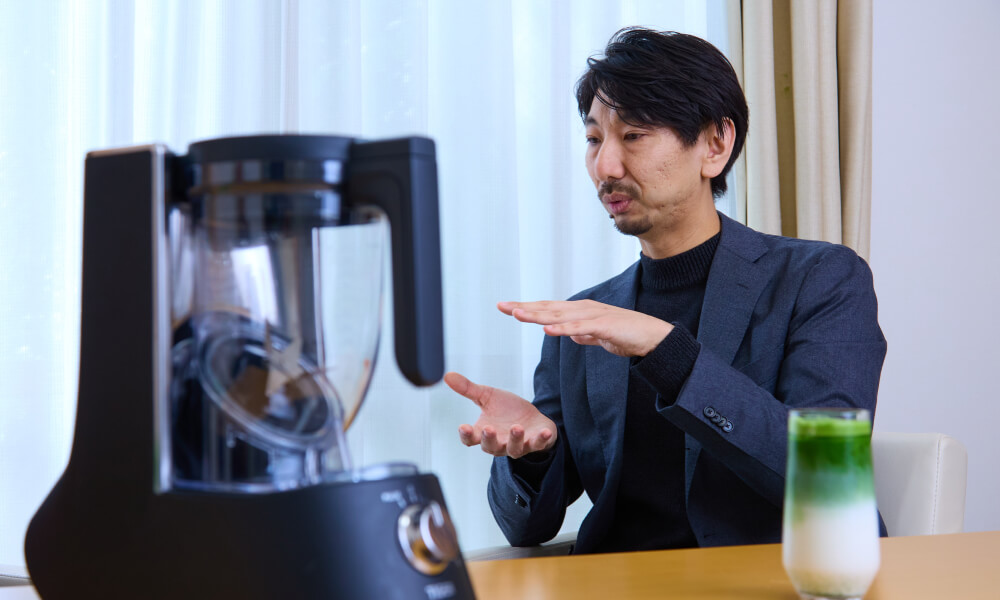

Koyama: We always wished we had a tool with the capacity to stir a large amount of matcha at once.
At that time, I heard that Tiger had released a blender with excellent stirring power. When we tried, it easily made a matcha latte for 6 people. We thought, “This is great!” and suggested a wide range of recipes, from simple drinks to smoothies and cakes.
Obata: It was a new realization for us as well. Was it difficult to stir the matcha with a conventional blender?
Koyama: Actually,blenders and matcha do not go together very well. The Chasen whisk, which has a fine bamboo tip, is a traditional tool to stir matcha and hot water in a bowl with a vibrating motion that moves back and forth as if cutting the matcha.

Koyama: When stirring with a mixer, milk frother, or other rotating device, the powder scatters or flies up to the outside or the top and cannot be stirred properly. The TIGER EDGE has diagonal blades that allow you to gently change the mixing speed from low to high. This is especially evident when water is agitated at low speed, which creates a water flow that kneads and mixes the liquid inwardly rather than splashing it outward.
Obata: The 45-degree angle of the blades of this blender generates three different water currents that wind up and down, which results in high mixing power. That’s why this blender can mix fine powders like matcha very well.
Koyama: TIGER EDGE is different from the traditional way, but I think it is a revolutionary tool that allows you to make a lot of matcha at once in a completely new way.

TIGER EDGE’s sophisticated design and specifications
Obata: As a professional architect and an expert in design, what were your thoughts on the TIGER EDGE?
Koyama: My first impression is that it is a very complete design. While respecting the “diagonal” concept, I thought it had a clean black form that matched the interior design of a stylish kitchen. I was convinced when I learned that it had won a world-renowned design award.
Obata: We had the honor to be awarded the “iF Design Award”. This award was established in 1953 and is said to be one of the world’s three major design awards, along with the “Red Dot Design Award” in Germany and the “International Design Excellence Award” in the United States. Furthermore, recently it won Japan’s “Good Design Award” in the top 10 ranking.

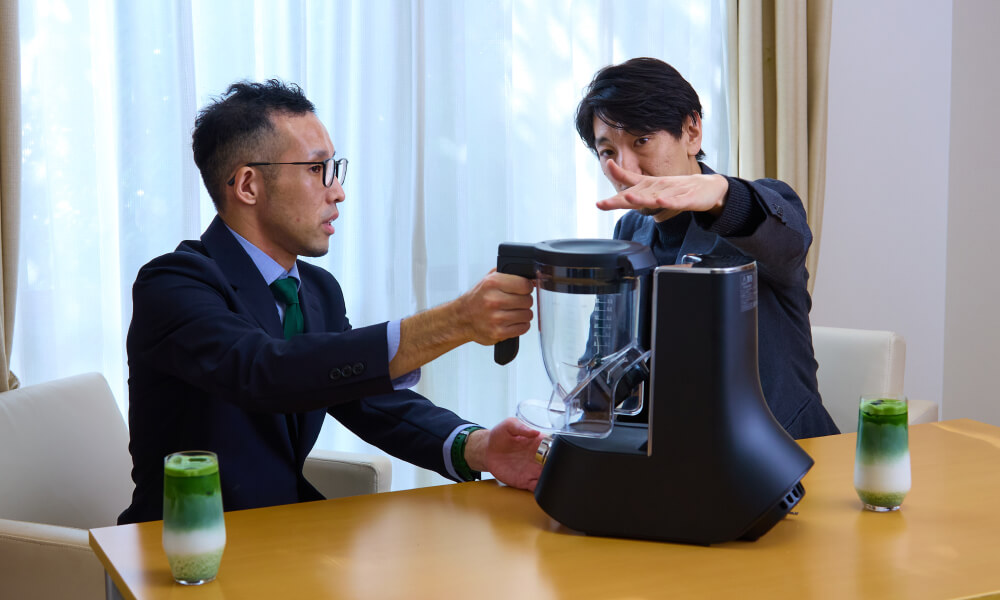
Koyama: Congratulations! You have paid attention not only to good design but also to ease of use, such as a container that can be easily slid on and off.
Obata: Conventional blenders tend to be stored away after use because of their height, but EDGE has a low form and is easy to use with a drawer type container that can be used in any installation location. The back diagonal-cut form emphasizes a whole design concept “45-degree angle”, which reduces the depth of the container while allowing it to dissipate heat.
The black matte texture was intended to give the appearance of a kitchen utensil. The mirror part of the container reflects the inside of the container, and we also focused on the expression of deliciousness of ingredients.
Koyama: So much ingenuity and ideas went into this design. I felt that the diagonal blade and the multi-speed adjustment made it possible to use in a variety of ways – the dynamic nature of crushing large fruits, etc. without difficulty with the delicacy of stirring as if mixing in hand -. How did you get the idea to recline the blade?
Obata: In the case of conventional blenders, in which the blade rotates horizontally with the bottom attached, the top of the cup rotates in a tornado-like whirlpool. At the upper side, the mixing power is weaker than at the bottom.
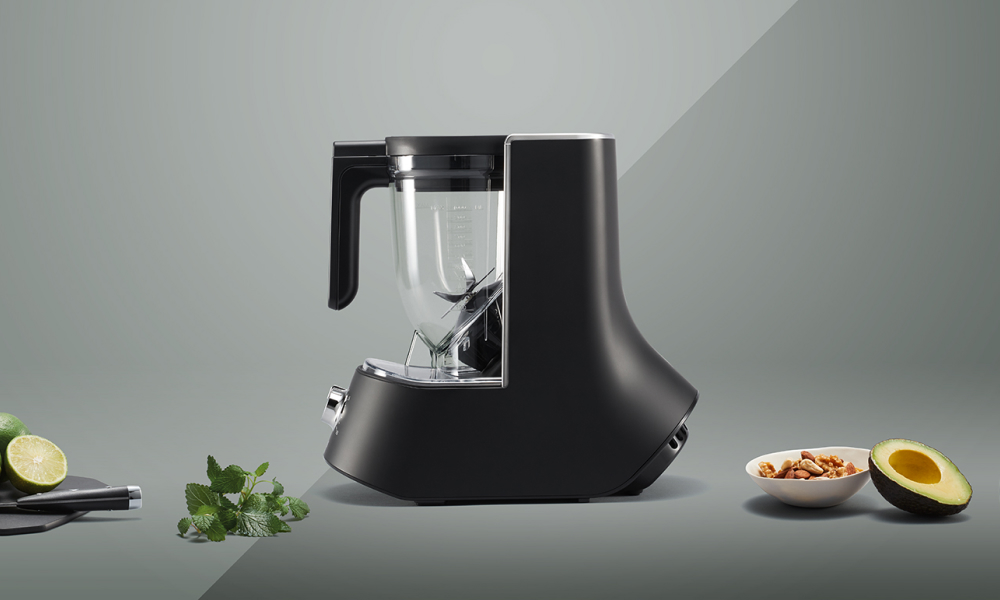

Obata: Also, with the cutting function, hard ingredients such as carrots need to be prepared by cutting them into small pieces. The diagonal blender was developed based on the idea of how to make a blender that can dynamically cut hard ingredients even if they are put in whole, while at the same time providing excellent mixing performance. By angling the blades at 45 degrees, we were able to maximize the mixing and cutting power. Another feature not found in conventional blenders is the absence of ribs on the cups. In the conventional blender the ribs serve the purpose of returning the spinning food back toward the blades, but the diagonal rotation does not need these due to its higher cutting performance. It is also easy to wash and allows blending of frozen fruits.
Matcha, as an alternative drink to coffee in the business setting
Obata: Could you tell us how to enjoy matcha using EDGE?
Koyama: First, enjoy an authentic matcha latte with family and friends, using plenty of our premium matcha. You can make matcha lattes for up to 6 people at once, when you invite people to your home.
*Uji matcha with rich flavor and aroma, carefully stone-ground using hand-picked first-choice tea from Kyoto Prefecture (100%).


Obata: That sounds fun! I heard that matcha is booming overseas as well.
Koyama: In addition to the trend of the healthy lifestyle that increased during the pandemic, I believe that the global boom was triggered by tourists who returned to their own countries after experiencing delicious matcha in Japan.
Obata: Indeed, I often see tourists visiting Japan enjoying matcha in Kyoto.
Koyama: Matcha is attracting attention as an alternative business drink to coffee, not only because of the health benefits* of the catechins and dietary fiber contained in matcha, but also because the caffeine-induced awakening effect* is known to last longer and more gently due to theanine, a flavorful ingredient. We also believe that people are attracted to the bright and photogenic green color. EDGE is the perfect tool to make matcha, with its various health benefits*, tastier, more enjoyable, and easier to incorporate into one’s daily life.
Obata: I would be happy if the boom of enjoying matcha with EDGE spreads further.
*These statements do not guarantee the product’s effectiveness or efficacy.
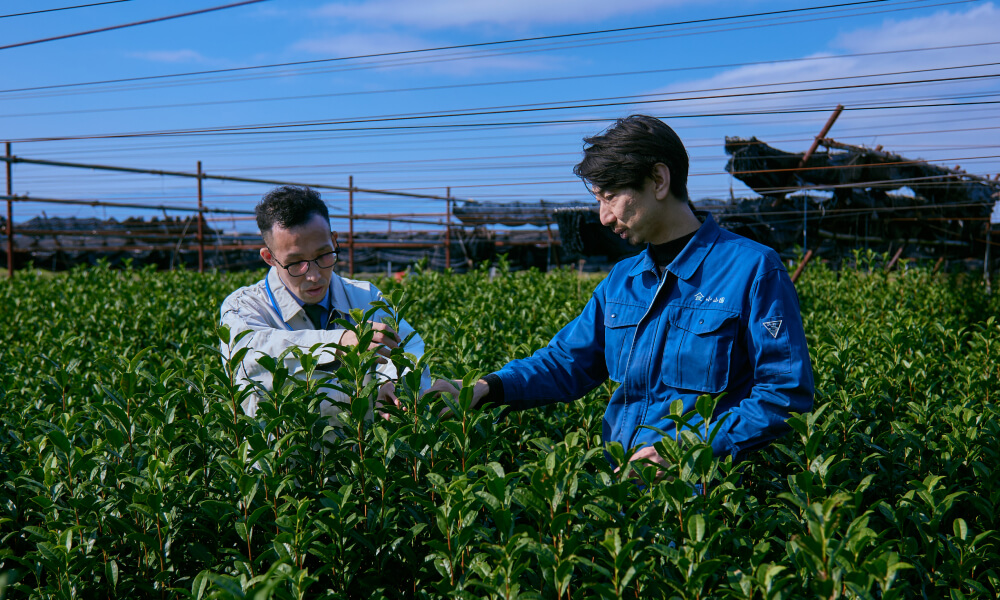
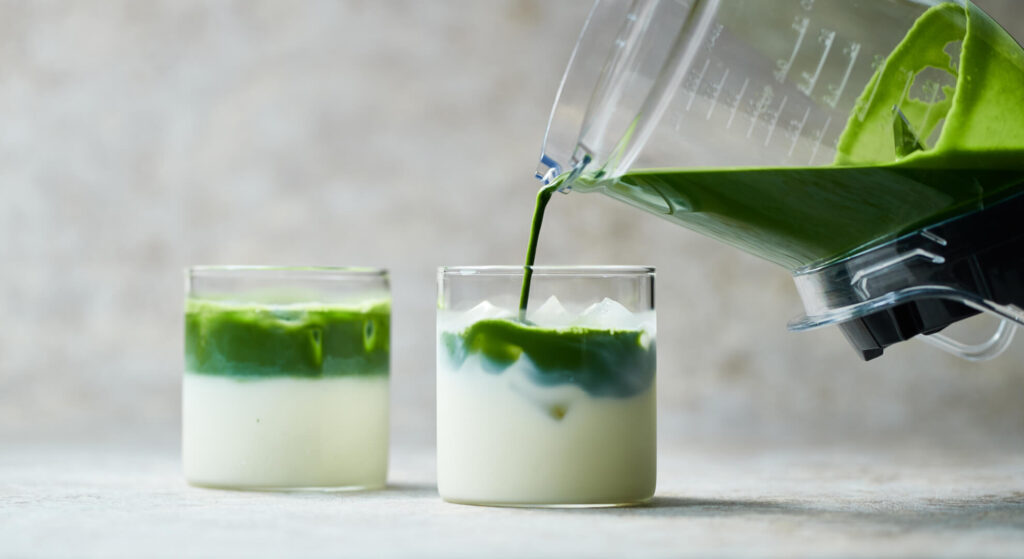
Advanced Authentic drinks and sweets
Obata: You have developed many recipes this time.
Koyama: The recipe is adjusted to a matcha concentration that anyone can enjoy, but Yamamasa Koyamaen’s high-grade matcha has less bitterness and astringency, so you will enjoy the aromatic and delicious flavor of the tea even if you use more matcha than the amount listed in the recipe.
Obata: I also tried the matcha latte and was surprised by its very mild flavor. I also tasted a cheesecake tart at the office, and it was so delicious that I couldn’t believe it was homemade. I was so impressed with how professional the taste became with the addition of matcha.
Koyama: The EDGE can stir even a large amount of powder well. You will be able to enjoy matcha sweets in a short time and without hassle.
Obata: Thank you for this opportunity!
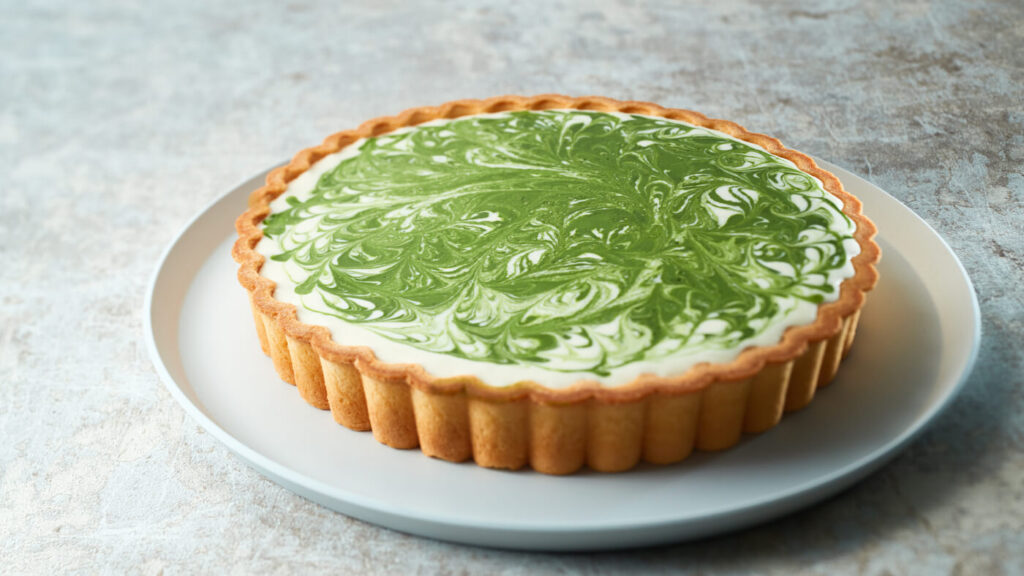

Tiger Corporation
R&D team Development leader of Tiger EDGE
Mr. Takafumi Obata
Responsible for design (structural design and 3D data creation), structural examination and testing (performance and cooking) on model prototypes, and other tasks from structural examination of new products to ordering molds.

Yamamasa Koyamaen
History
Tea cultivation and production began in the early Edo period in the Uji and Kokura areas,
and in 1861, Masajiro Koyama, the founder, began selling tea.
The company’s operations ranged from the management of tea gardens to the manufacture and sale of tea.
Masajiro Koyama II started wholesale business, expanding sales channels nationwide and developing manufacturing, processing, and wholesale business of green tea in general.
The company’s strength lies in its high-end matcha, so much so that it now has various original blends used in prestigious tea ceremonies.
Products introduced in this article
